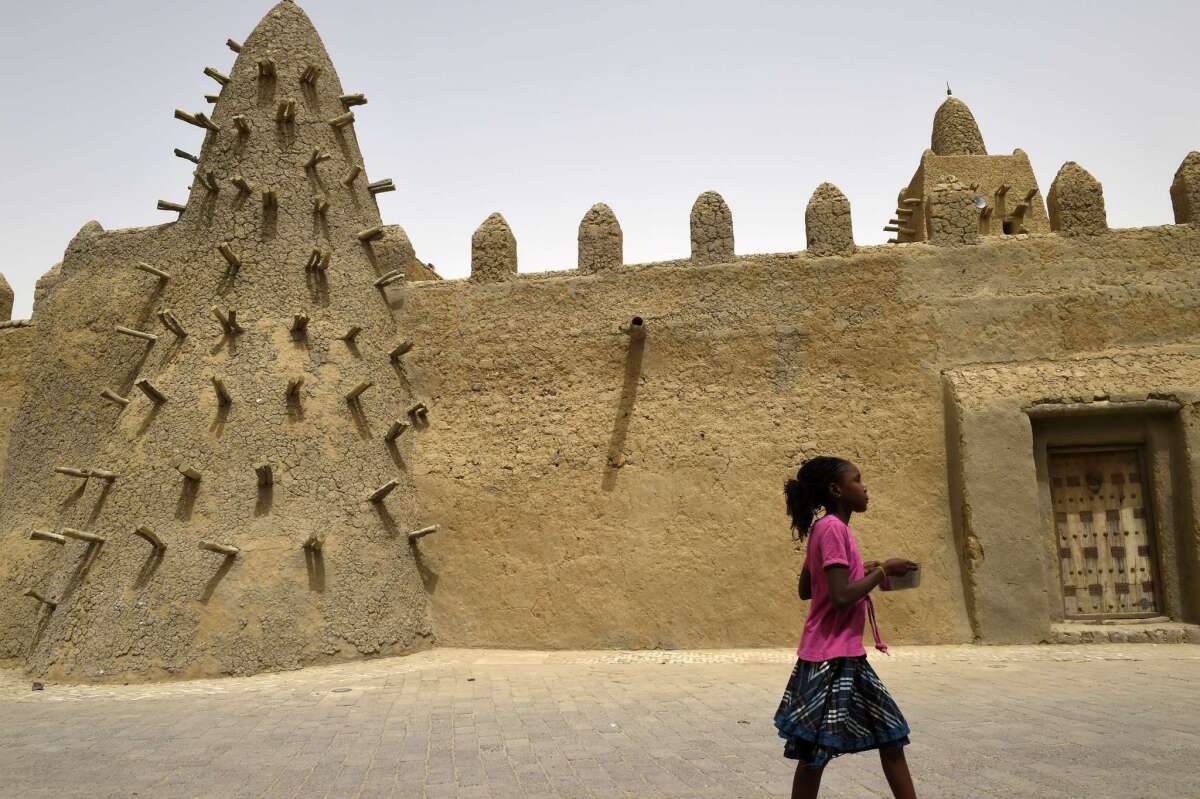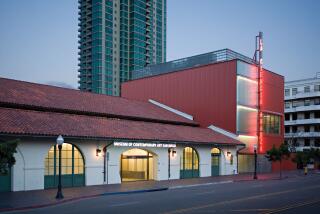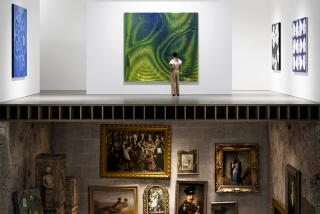Roundup: Timbuktu restored, Great Wall crumbling, Bill Clinton’s sax at the Met

Conservators have almost completed work on a restoration of Timbuktu’s famous mud-brick architecture after it suffered damage in the hands of Islamic militants in 2012. A girl walks along the surrounding wall of the Djingareyber Mosque last month.
- Share via
A founder of Lowrider magazine passes away. A Delaware museum quietly sells two important works. And the Great Wall of China is slowly disappearing. Plus: art in Havana, defending the White House and Bill Clinton’s sax. Here is the Roundup:
— R.I.P. Sonny Madrid, one of the founders of Lowrider magazine.
— Nicolas Bourriaud, the influential French critic, curator and author of “Relational Aesthetics,” has reportedly been dismissed from his position overseeing the National School of Fine Arts in Paris, allegedly to make way for a new director with closer ties to the president of France.
— The Delaware Art Museum has sold two important works by Winslow Homer and Andrew Wyeth to pay down construction debt. (Using art to pay the bills is a practice that has earned the museum sanctions from the Assn. of Art Museum Directors.)
— Roughly 1,200 miles of the Great Wall of China have disappeared due to erosion and other factors.
— Restoration work on the famous mud-brick shrines of Timbuktu is set to be completed this month. The mausoleums had been targeted by Islamic militants in 2012. (ARTnews)
— Modernist architect Donald Wexler, who passed away last week, helped shape the look of Palm Springs. Times architecture Christopher Hawthorne has an appreciation.
— Studio Museum in Harlem to expand in new David Adjaye-designed building.
— California artist Robert Irwin has demolished a historic hospital in Marfa, Texas, and will now rebuild a facsimile of it as part of an installation he is producing there. Critic Mark Lamster has a great essay on the project and what it means for this unusual art town.
— Critic Holland Cotter provides a nice overview of the art — sanctioned and not — at this year’s Havana Biennial.
— A must-read profile of Robert Frank, the artist whose project “The Americans,” published in 1958, imbued photography with informality and realism and helped change the course of photography.
— A forgotten archive of surf photographs reappears at the Rose Bowl flea market.
— Fallen Fruit — or how an L.A. collective made art out of lemons.
— Behind the scenes: a posthumous profile of John Bowsher, the man who helped make big works of art and architecture happen, from the renovation of an old Nabisco plant in New York’s Hudson Valley for the creation of Dia: Beacon to the transport and installation of Michael Heizer’s 340-ton rock sculpture “Levitated Mass” at LACMA.
— The story of the rogue New Mexico gallerist who buried a treasure chest somewhere in the Rocky Mountains. A good yarn.
— “The process of making art today is essentially identical to the process of making startups.” This piece on what tech types can learn from the Impressionist art market of the late 19th century is unintentional comedy. (Weisslink)
— NPR explores ways to fortify the White House from intruders who have been scaling the fence. Lots of interesting talk about bollards and ha-has.
— Fires (intentional and not) aren’t the only danger to black churches, reports Citylab. It’s also their aging infrastructure, especially in rural areas.
— A group of architects — including Daniel Libeskind and Zaha Hadid — defend seven of the world’s most hated buildings.
— A stunning piece on race and the arbitrary nature of the death penalty in a Louisiana parish. Riveting.
— And last but not least, Bill Clinton’s sax is on view at the Metropolitan Museum of Art in New York.
Find me on the Twitters @cmonstah.
More to Read
The biggest entertainment stories
Get our big stories about Hollywood, film, television, music, arts, culture and more right in your inbox as soon as they publish.
You may occasionally receive promotional content from the Los Angeles Times.











